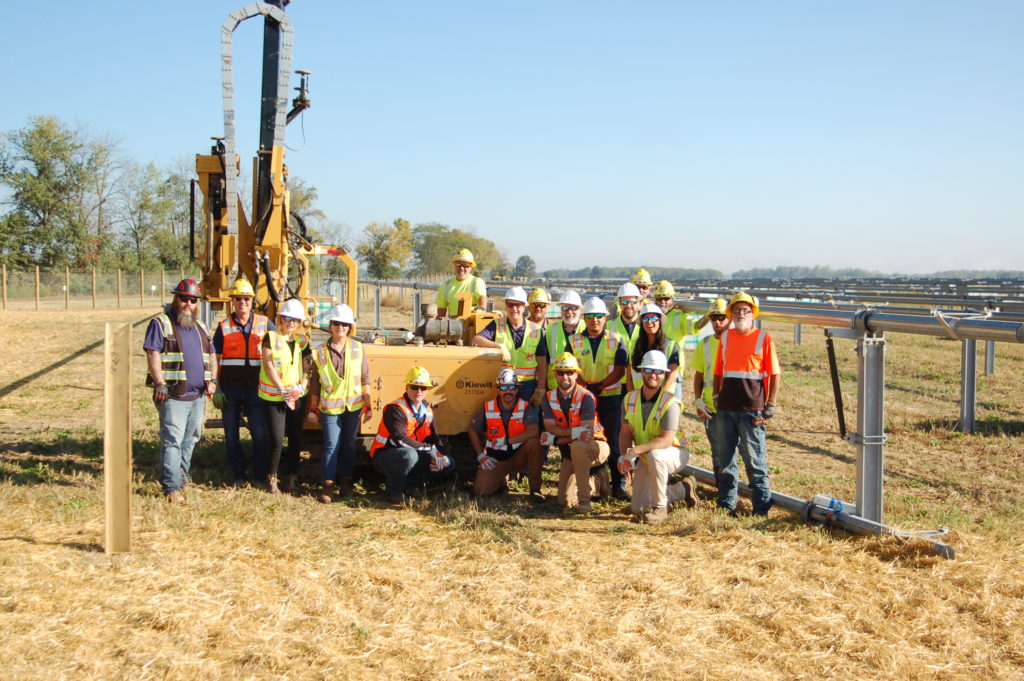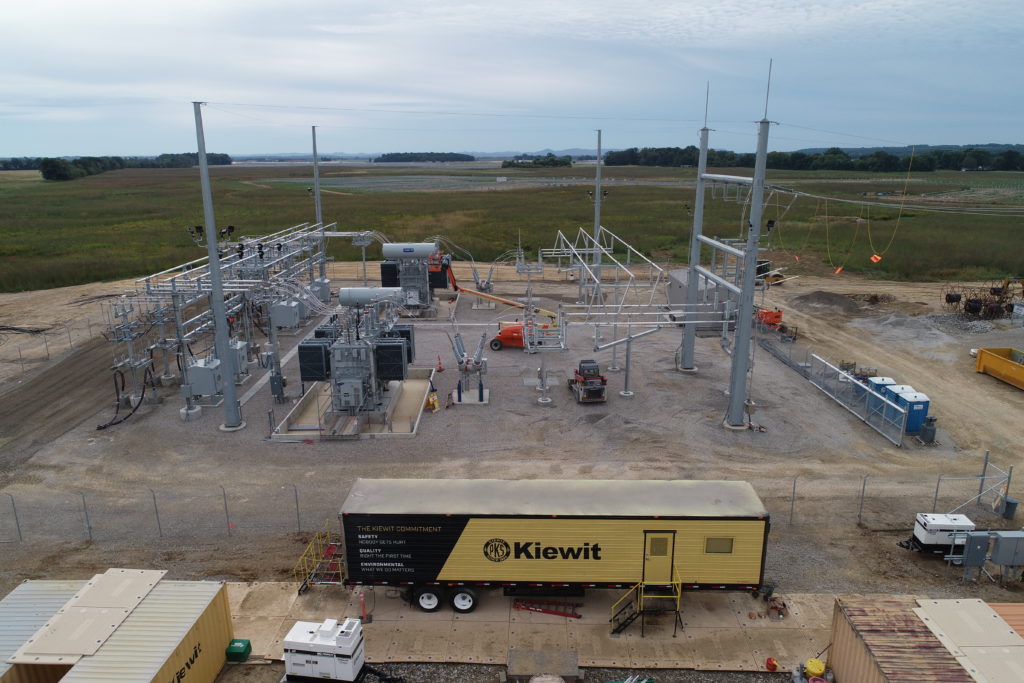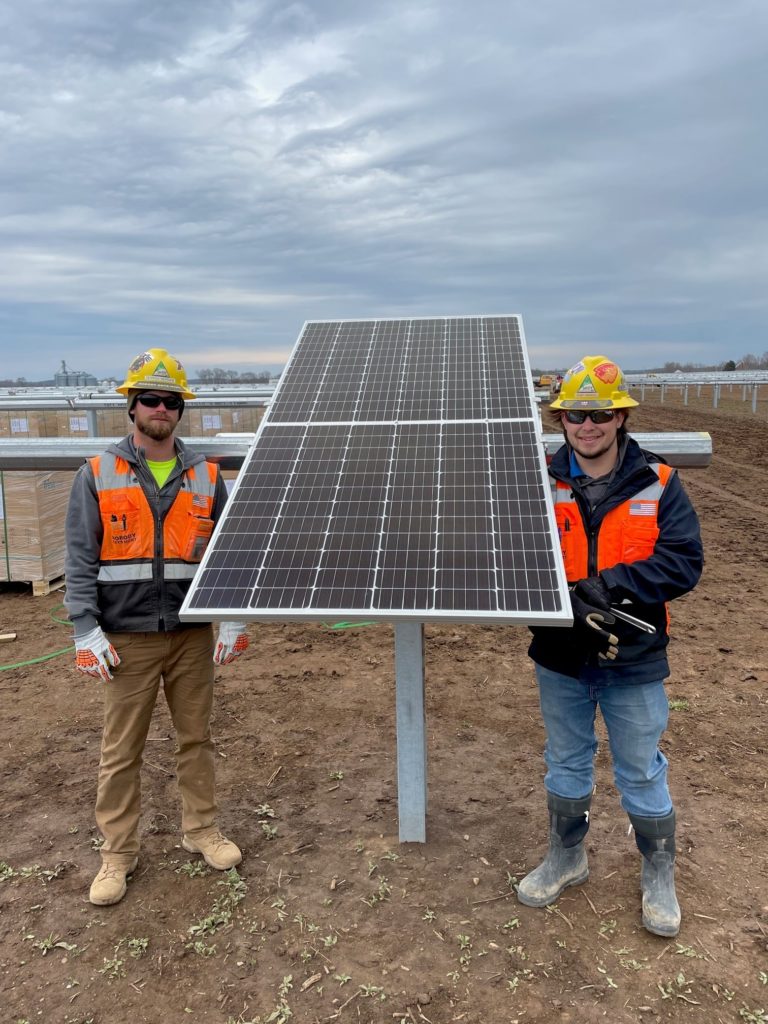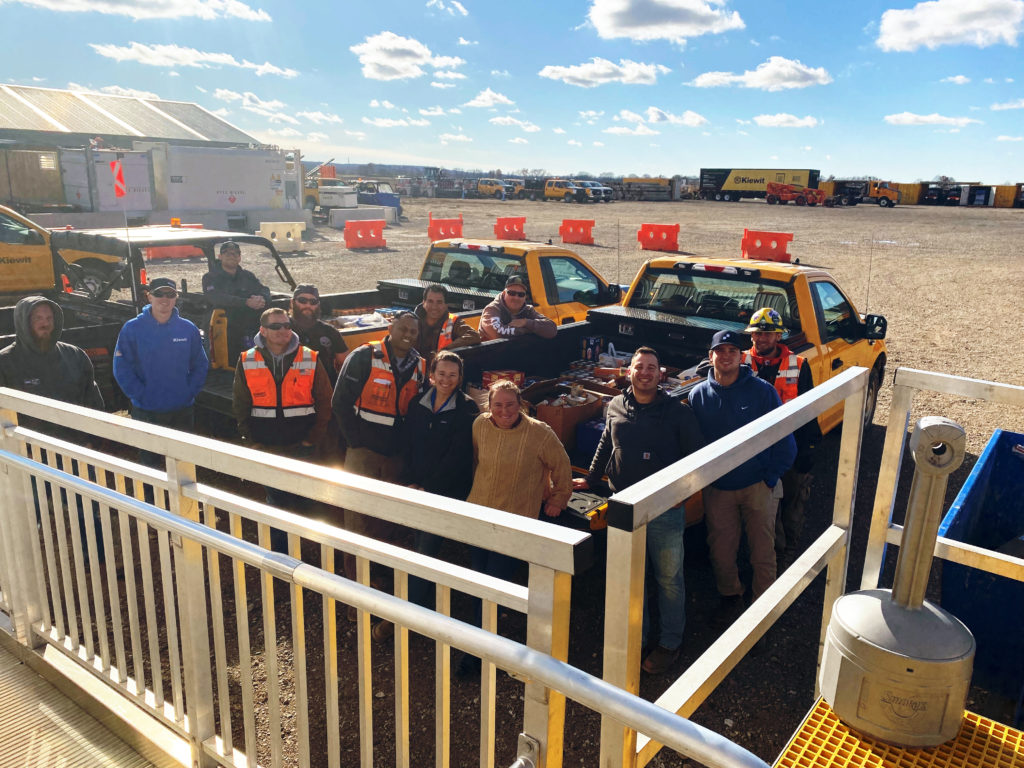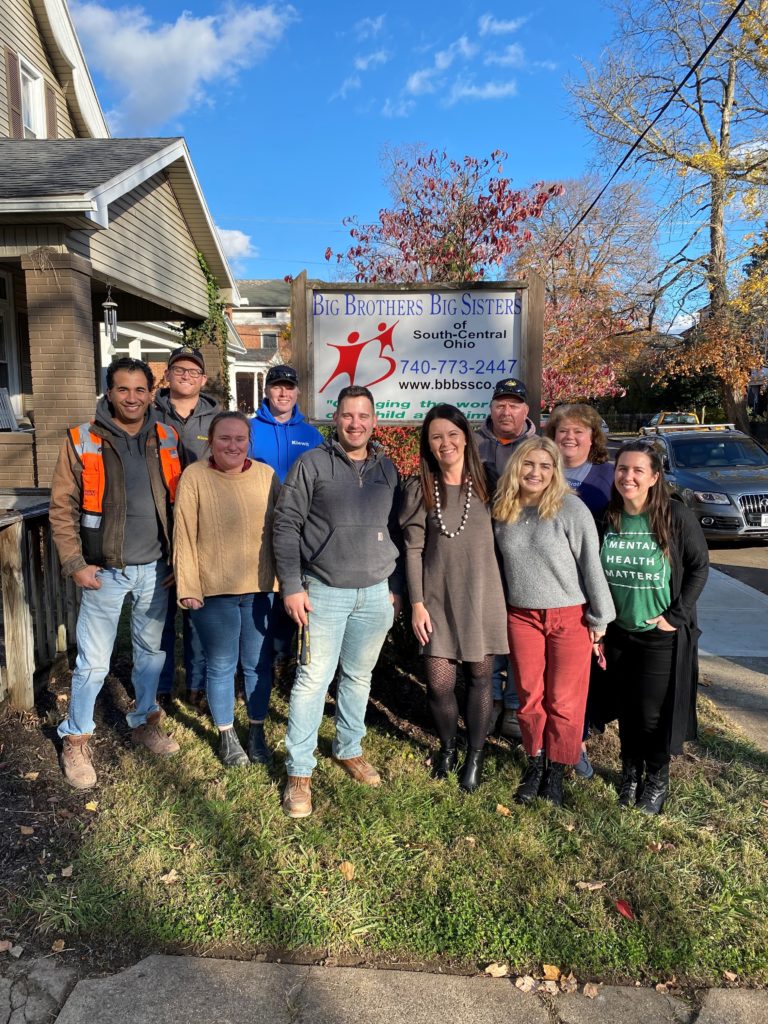When installing more than 776,000 solar panel modules across 2,000 acres, every second of installation time counts. At no time is that more important than when your project is one of the first utility-scale solar jobs in the state of Ohio.
In 2021, Kiewit began a partnership with National Grid Renewables to mobilize and construct a large-scale industrial solar farm. Once completed, the Yellowbud Solar project will provide more than 274 megawatts of solar power generation.
The project is estimated to create more than $90 million in direct economic impact over the next 20 years through tax revenue, landowner income, local spending and charitable funding. Ohio-based suppliers were used to produce the solar module units and the piles used in construction, already creating economic opportunity in the state.
Every step in the process from greenfield construction to module installation came with a detailed quality and safety process to ensure the project remained on track.
“What set us up for success was the team coming up with a good sequence of how to install the panels. We took best practices from some of Kiewit’s other solar jobs and came up with a sequence that has really driven efficiency to where it is right now,” said Project Engineer Nick Christman.
Maximizing productivity
The Kiewit team on Yellowbud has construction and installation down to a science.
The project is comprised of civil, electrical, racking, fencing, piling and module installation work. To meet schedule and maximize productivity, the project team worked to find efficient installation techniques to speed up construction.
The team held operational improvement shutdowns periodically where work stopped, and the crew would set aside time to brainstorm ideas on how the project could run faster without compromising safety. For example, when operations first started, the team was driving 95 piles per crew per shift. While the team could have settled for this baseline, they instead sought to increase the number of piles driven per shift. Through a team effort, the number of piles driven increased to an impressive 150 per crew per shift. The success was fully attributable to the crews bringing forward ideas for improvement. By enhancing practices for simple things like staging of materials before installation, the team was able to increase productivity.
This mindset applied to racking, fencing, and module and electrical installations, with crews on each sequence of the project working to improve speed.
The team had a deeply embedded spirit of continuous improvement — always striving to be better and perform with greater efficiency.
“I am very proud of how our people took something very new to them and developed the best way of doing it, never settling for the status quo. They were always digging into how we could get better. It was quite impressive,” said Kiewit Project Manager Jake Lathers.
When installing 776,000 solar panels, efficiency matters. The Yellowbud project team was able to make process improvements and maintain a proactive mindset to improve installation and construction efforts, which ultimately led to the project being delivered on time.
The Yellowbud Solar project spans approximately 2,000 acres and connects to a regional transmission line.
Training a labor force for the future
The other driver of success was the “people training” that happened on-the-job. Yellowbud is Kiewit’s first utility-scale solar project built with union craft employees — over 600 workers.
One of the biggest challenges from the beginning was finding the right-skilled people to perform the work. By establishing good relationships with local unions and partnering with them, the project team ensured they were in front of the right people that made Kiewit the preferred contractor the members wanted to work with.
By providing equipment demonstrations and trainings at the local union hall, the Kiewit team trained workers before they even arrived on site. This provided craft employees with new skills to use on the Yellowbud job, but also, skills they could carry forward to future solar jobs.
In total, more than 80% of the hours worked on site were completed by Ohio-based workers, making significant use of local labor, and giving those workers skills that could help them in
the future.
Kiewit project management established trust and buy-in with the crews by “walking the talk” when it came to safety on the project site. “We focused on having our staff maintain a heavy field presence because we had a newer workforce and wanted to make sure Kiewit was not perceived as just another contractor that only talks about safety, but that we actually prioritized it,” said Lathers.
By showing workers that safety was Kiewit’s standard operating procedure, the project team was able to build positive morale on the project.
“Demonstrating that Kiewit staff were there to make sure everyone went home safe every night went a long, long way with everybody that works in the union sector in Ohio,” said Lathers.
Next up
As the renewable energy market continues to heat up, National Grid Renewables and Kiewit look to build upon the success of Yellowbud and take those lessons learned to future solar projects.
“Across the nation, solar energy projects like Yellowbud Solar are providing significant positive economic impact on local, statewide and national economies,” said Blake Nixon, President of National Grid Renewables.
The success of the Yellowbud Solar project laid the groundwork for future solar projects and an ongoing partnership between National Grid Renewables and Kiewit. The team proved that each second counts toward achieving project goals and that a team focused on continuous improvement can deliver impactful results.
In 2021, the team shattered their initial giving goal and contributed over 7,500 pounds of food and supplies in just three weeks. In 2022, they raised over $3,000 toward the Big Brothers Big Sisters Toys for Tots program. Christman said of their philanthropy efforts, "It was our fundamental belief that while we were constructing this solar project, we had a duty to surrounding communities, including local landowners, to help positively impact the area any way possible."
